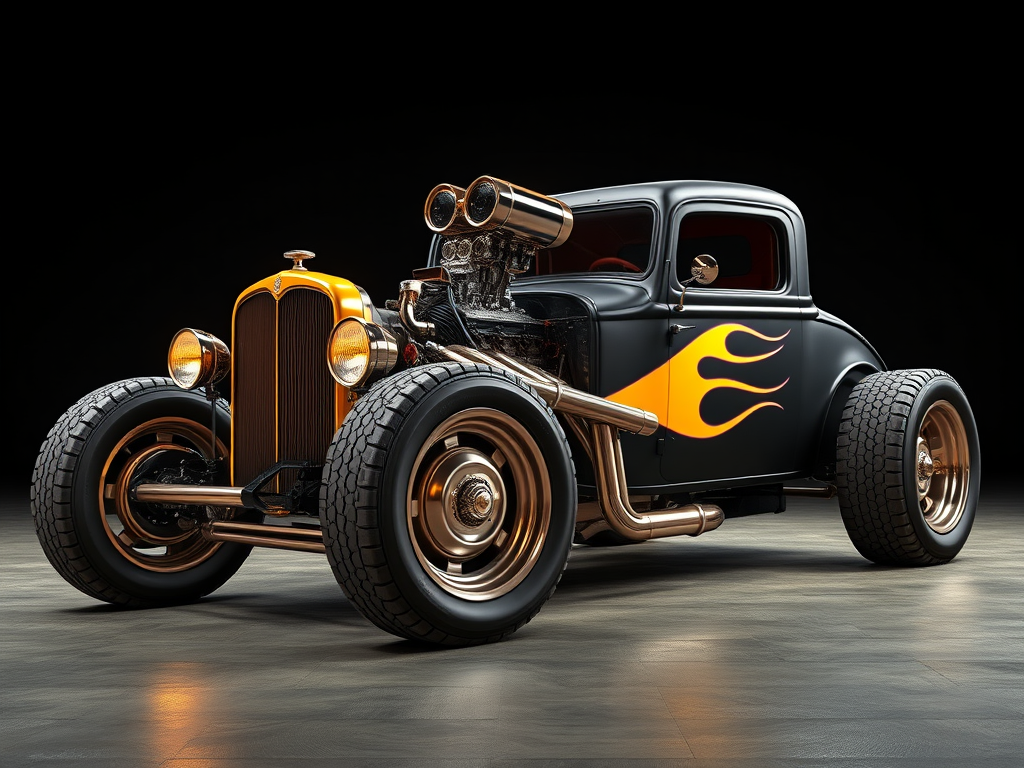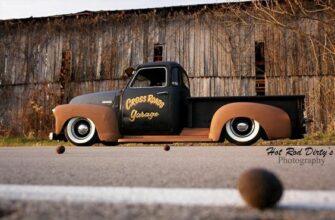Rat rods are a unique and exciting subculture in the automotive world. These vehicles combine vintage aesthetics with modern performance, creating a one-of-a-kind driving experience. If you’re considering embarking on your first rat rod project, this guide will provide you with essential steps and tips to ensure a successful build.
1. Define Your Vision

Before diving into any project, it’s crucial to have a clear vision of what you want to achieve. Consider the following aspects:
- Style: Do you prefer a classic hot rod look or something more rugged?
- Performance: Are you aiming for speed, handling, or both?
- Budget: Determine how much you can afford to spend on parts, labor, and tools.
- Timeframe: Set realistic deadlines for each stage of the project.
2. Choose the Right Base Vehicle
The foundation of your rat rod is the base vehicle. Here are some popular choices:
- Ford Model A/T: Known for their iconic design and ease of modification.
- Chevrolet Bel Air: Offers a sleek body style and ample space for customization.
- Dodge Power Wagon: Provides a robust frame and a distinctive appearance.
Consider factors like availability, condition, and cost when selecting your base vehicle.
3. Gather Tools and Equipment
Having the right tools is essential for a smooth build process. Some basic tools include:
- Welding equipment (MIG or TIG welder)
- Grinder
- Drill press
- Socket set
- Wrenches
- Jack stands
- Safety gear (gloves, goggles, etc.)
Invest in quality tools that will last through multiple projects.
4. Plan Your Design
Sketch out your design ideas and consider the following elements:
- Bodywork: Decide whether you want to chop, channel, or section the body.
- Engine: Choose an engine that fits your performance goals and budget. Popular options include small block V8s and inline sixes.
- Suspension: Select a suspension setup that provides the desired ride height and handling characteristics.
- Wheels and Tires: Opt for wheels and tires that complement the overall aesthetic while ensuring proper fitment.
5. Source Parts and Components
Finding the right parts can be challenging but rewarding. Here are some tips:
- Junkyards: Great for finding affordable, used components.
- Online Marketplaces: Websites like eBay and Craigslist offer a wide selection of parts.
- Swap Meets: Attend local car shows and swap meets to find rare and hard-to-find items.
- Custom Fabricators: For specialized parts, consider working with custom fabricators who can create bespoke components.

6. Start Building
With your design finalized and parts sourced, it’s time to start building. Follow these steps:
- Disassembly: Carefully disassemble the base vehicle, labeling all parts for reassembly.
- Chassis Modification: Strengthen and modify the chassis as needed. This may involve cutting, welding, and reinforcing various sections.
- Bodywork: Perform any necessary body modifications, such as chopping the top or channeling the body over the frame.
- Engine Installation: Install the chosen engine and transmission, ensuring proper alignment and clearance.
- Wiring and Plumbing: Complete all electrical and plumbing work, including wiring harnesses, fuel lines, and brake lines.
- Interior: Customize the interior to match your design, focusing on comfort and functionality.
7. Test and Tune
Once the build is complete, it’s time to test and tune your rat rod. Ensure everything functions correctly and make any necessary adjustments. Take the vehicle for a test drive to evaluate its performance and handling.
8. Legal Considerations
Ensure your rat rod complies with local laws and regulations. This may involve registering the vehicle, obtaining insurance, and passing safety inspections. Consult with local authorities to understand specific requirements.
Here’s a table with important tips for starting a RAT ROD project:
| Category | Tip | Details |
|---|---|---|
| Planning & Budgeting | Start with a realistic budget | Decide on your spending range for parts, tools, and labor to avoid overspending. |
| Finding the Right Base | Choose a solid donor car | Look for old, rusty vehicles with good structural integrity, such as pre-1960s American cars. |
| Design Inspiration | Sketch your vision | Decide on the style (traditional rat rod, custom modern touches) and keep photos for inspiration. |
| Tools & Workspace | Set up a functional workspace | Ensure you have a space to work with proper tools like welders, grinders, and safety equipment. |
| Rust Appeal | Embrace imperfections | Rust, dents, and mismatched parts are part of the charm, so don’t strive for perfection. |
| Engine Selection | Focus on simplicity and power | Pick a reliable engine with a bit of grunt, such as a small-block V8, but keep it simple to maintain. |
| Suspension & Chassis | Upgrade for safety | Ensure the frame is reinforced, and consider using modern suspension for safer handling. |
| Braking System | Prioritize safety | Upgrade brakes to ensure the rat rod is safe to drive, especially if the original system is outdated. |
| Custom Fabrication | Experiment creatively | Use salvaged parts creatively—e.g., tractor seats, custom gear shifts, or unique bodywork. |
| Wiring & Electronics | Keep it minimal | Use a basic wiring harness, focusing on functionality over extras like advanced electronics. |
| Documentation | Stay legal | Check local regulations and ensure the rat rod meets minimum road safety requirements. |
| Community Involvement | Join rat rod forums or clubs | Engage with communities for advice, parts trading, and showing off progress. |
Conclusion
Building your first rat rod is a rewarding and fulfilling experience. By carefully planning, sourcing the right parts, and executing your design, you can create a unique and eye-catching vehicle that reflects your personal style. Remember to enjoy the journey and take pride in every step of the process. Happy building!
(11)








